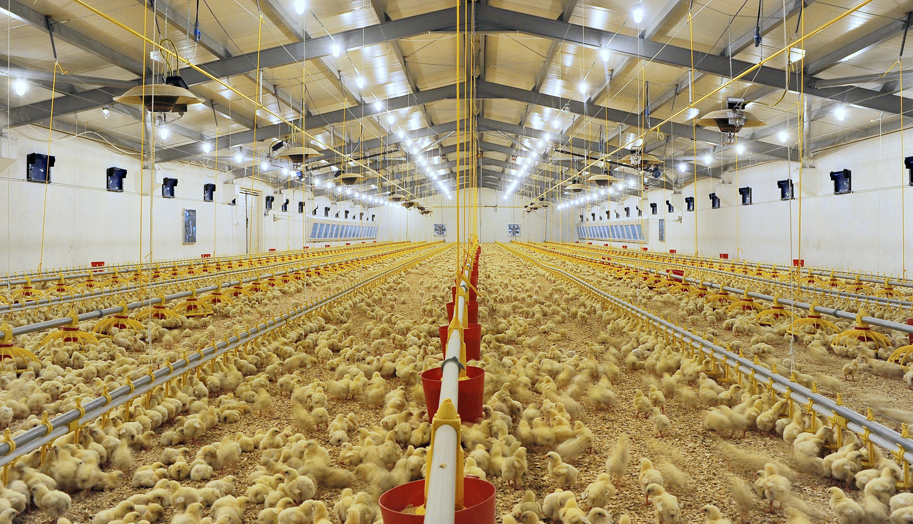LIGHT MANAGEMENT FOR COMMERCIAL POULTRY PRODUCTION
DR RUSHIKESH A. KANTALE
PHD SCHOLAR
DEPARTMENT OF LIVESTOCK PRODUCTS TECHNOLOGY, GADVASU, LUDHIANA
Why lighting is important?
When managing a healthy, productive flock, getting the lighting conditions right is very important. In chickens, light penetrates not only through the eyes, but also through the top of the skull, via the pineal gland, and through the pituitary gland next to the hypothalamus. This stimulates melatonin production which develops proper diurnal rhythms.
This day and night cycle is important for birds as it drives things like immune function and growth rate and reproductive hormones. This improves health, immune status, mobility and alertness.
Light Segment-
There are three segments of the spectrum, each of which can have an effect on bird’s behaviour: ultraviolet light, visible light and infrared light. Ultraviolet light is towards the short end of the spectrum. The wavelength of visible light ranges from 400 nm to around 700 nm. Infrared light’s wavelength is longer than the light we can see, measuring above 700 nm. Chickens can see in the range of 315–750 nm. The longer wavelengths (Red) of visible light are more capable of reaching the brain than shorter wavelengths.
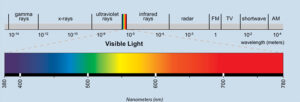
Terms used in connection to light-
- Candle– A candle is the unit of luminous intensity of a light source in a specified direction.
- Lumen– The lumen is defined as the rate at which light falls on a square foot area surface which is equally distant one foot from a source whose intensity is one candle.
- Foot Candle– Illumination on a surface is measured in foot-candles. A foot candle is defined as the intensity of light striking each and every point on a segment of the inside surface of an imaginary one-foot radius sphere with a one candlepower source at the center. Thus one foot candle equals one lumen per square foot.
- A lux of light intensity is equal to one lumen per square foot. 1 foot candle = 10.76 lux.
Types of Light-
There are four common light types used in Poultry houses;
- Incandescent – Cheapest; necessitates reflectors, short bulb life (750-1000 hr).
- Fluorescent – 3 to 4 times more efficient than incandescent bulbs; 10 times longer life than incandescent bulb.
- Mercury vapor – Long life (24,000 hr); requires several minutes to warm up; cannot be used in houses with low ceilings.
- Compact Fluorescent (CF) Lighting – More energy efficient. One-fifth energy of fluorescent light is needed to provide same light intensity (lumen).
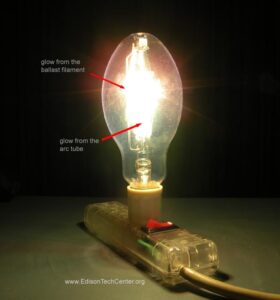
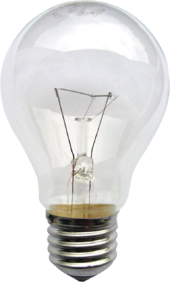
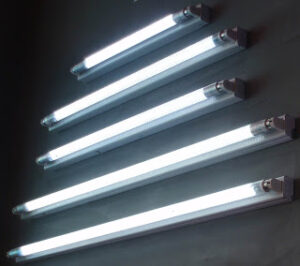
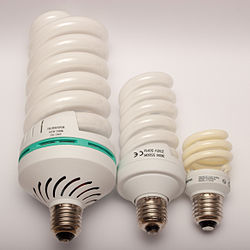
Management of light-
Important points to be considered while installing light bulbs in Poultry houses:
- The distance between bulbs should be 1½ times the distance from the bulb to the bird level.
- The distance from the bulbs to the outer edges of the house should be only ½ the distance between bulbs.
- The ratio of light from poorly lit corner to brightly lit corner should not be more than 1:3. If ratio becomes wider than 1:15 then problems in both area may arise.
- Birds in bright lit area are likely to develop cannibalism and birds in other corner may be physiologically inactive.
- In cage system, the bulbs should be placed in such a way that their rays fall on the feed and on the birds.
- Clean reflectors increase the light intensity at bird level by 50%, compared with no reflector.
- Avoid cone shape reflectors since they confine the light rays to limited area. Better to use flat type reflector with rounded edge.
- In case of deep litter system, the bulb is to be placed at 7-8’ height whereas in cage house, keep in aisle.
- Avoid hanging bulbs by a cord in open houses
- Very dirty bulbs emit about 1/3 less light than clean bulbs. Light bulbs should be cleaned once in two weeks.
Factors influencing intensity of light-
There are two factors affecting intensity of light falling on birds
- Power of light source, the amount of light given out by the bulb is directly proportional to its wattage
- Distance of surface from the light source. The light intensity decreases as the surface of light is placed farther away from the source.
Effect of light during Growing period-
Chicks hatched during March-April will get increased daylight during its growing period which leads to early sexual maturity, lower body weight, smaller and fewer eggs throughout their laying period in contrast to hatches obtained from October-December.
Effect of light during laying period-
Birds reared under increased day-light produce more eggs due to the release of FSH and LH from the pituitary. Brightness of light also has influence on egg production. On practical conditions, 1 ft candle light intensity is needed in layer houses. For maximum egg production, 16 hours light is needed during peak egg production period. Reducing photoperiod during laying period seriously affects egg production. The artificial light can be given either in the morning, evening or both morning and evening.
Under windowed housing system,
- For day old chicks- 23 hours of day length and decrease in light hours thereafter continuously with regular speed at weekly interval till natural day length is achieved at 20 weeks of age.
- After 20 weeks of age laying pattern of lighting is given.
- If birds are getting 15 hours or more natural day length, then it should be raised @ of 15 min per week till 16 hours day length is achieved. Thereafter, day length should be kept constant.
Lighting program for commercial layer-

Lighting program for breeders-

Lighting program for broilers-
https://www.pashudhanpraharee.com/category/poultry-farming/![]()


